The Canoo Pickup Looks Like No Other Electric Truck, And I'm Fascinated
The Canoo electric pickup looks weird, and that's a really good thing. Unveiled this week, the newest addition to the growing roster of zero-emission trucks isn't going into production until 2023 at the earliest, the startup says, but is already getting attention by virtue of a design that upends, rather than apes, the traditional pickup aesthetic.
While crossovers and SUVs have rapidly replaced much of the sedan market, someone who might've been shopping for a pickup five decades ago wouldn't find much different were they to head to a Ford, Chevrolet, or Ram dealership today. Yes, modern trucks are typically larger, more frugal, and better equipped than their predecessors – not least because automakers know that many drivers will pay handsomely for those premium features – but the core silhouette hasn't really changed.
Park a Canoo pickup next to an F-150 or a Silverado, though, and the differences couldn't be more stark.
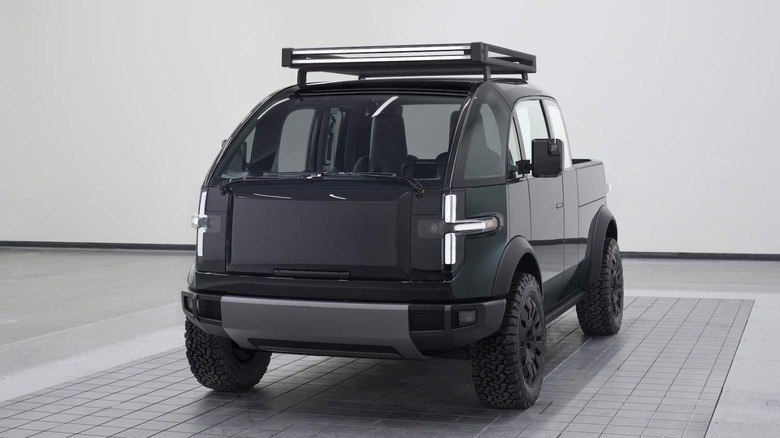
Rather than a long hood, Canoo's truck pushes its cab right to the front. More like a van, in fact. The proportions of a traditional pickup are a function of their underlying architecture, of course. The long hood gives plenty of space for a big, potent engine; cab length is defined by how many people you need to transport versus how long the truck ends up; at the rear, the bed size is a balance between capacity and overall vehicle length and nimbleness.
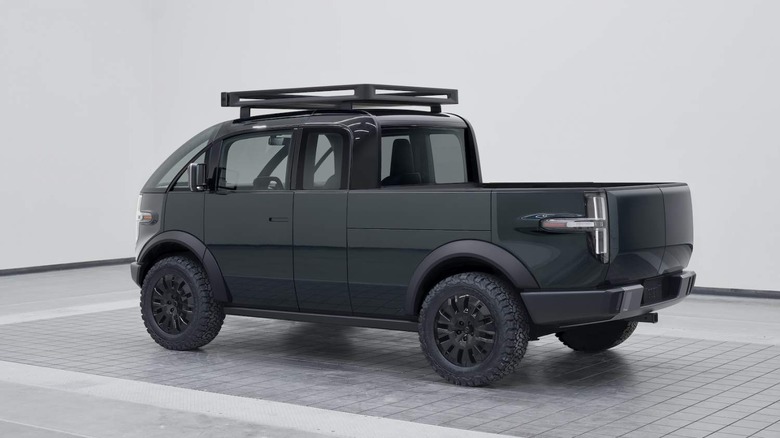
Despite a very different approach to propulsion, though, most of the electric pickups we've seen so far have stuck closely to that template. There may not be a big gas or diesel engine under the hood of Rivian's R1T or GMC's Hummer EV, but they still stick to that layout. Even Tesla's angular Cybertruck, for all its sharp corners and flattened surfaces, is fairly recognizable as a pickup in profile.
For an EV startup at a time when plenty of companies – big and small, old and new – are working on electric vehicles, Canoo has seen arguably more than its fair share of attention. The automaker broke cover back in late 2019, with a 7-seater alt-take on the minivan. Rather than selling or leasing its electric van, Canoo said, it would offer it as a subscription instead.
That was followed in 2020 by Canoo's multi-purpose delivery vehicle, an electric van to take on the zero-emissions urban and suburban logistics challenge. While with its crisp edges it looked very different from Canoo's curvaceous first vehicle, what was underneath was the same. In fact, the common architecture is Canoo's not-so-secret weapon.
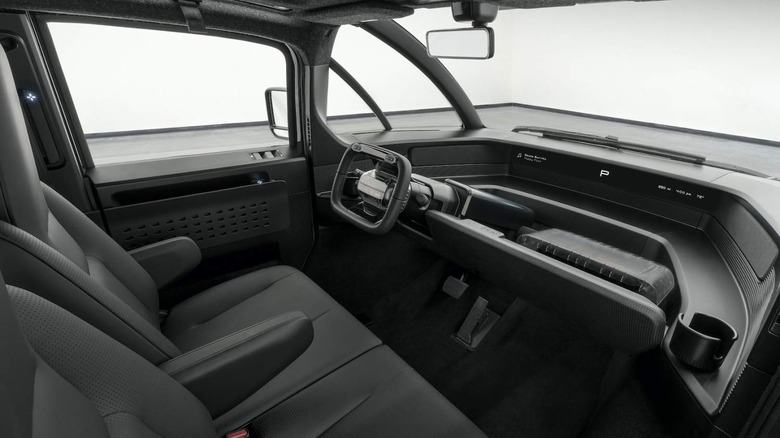
Like most automakers with serious ambitions in EVs, Canoo has designed a standardized platform on which to build its vehicles. Known as a skateboard, it typically includes one or more electric motors, the battery packs, and the electronics to run them all. However Canoo's design goes further still, relying on steer-by-wire and brake-by-wire to do away with mechanical links for steering and slowing between the controls in the cabin and what's happening to the wheels underneath.
It's that flexibility which reportedly got Apple's attention – even if a rumored acquisition never amounted to an actual deal – and which underpins the Canoo pickup, too.
"Traditional EV platforms have power units, shock towers and mechanical steering columns that protrude into the vehicle and take up space," the automaker points out. "By incorporating steer-by-wire and other space-saving technologies, Canoo's thin platform, with no need for an engine compartment, allows the company to offer a flatbed size comparable to America's best-selling pickup truck on a smaller footprint."
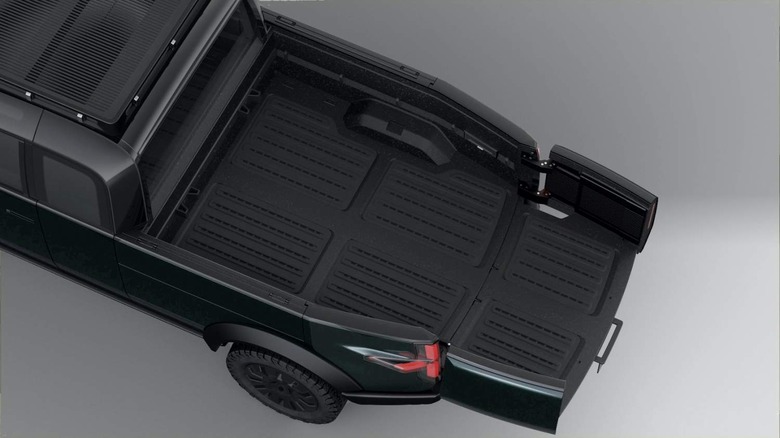
That "best-selling pickup" is the Ford F-150, of course, which in SuperCab form with a 6.5-foot bed measures just under 232 inches in length. Canoo's pickup, with a 6-foot bed that extends to an enclosed 8-feet, is 184-inches long in contrast. The EV's 1,800 pound payload capacity is at the low end of what Ford's can handle, engine depending, but still comparable.
Chopping off the hood, though, doesn't just make for a smaller truck. It'll help with visibility, Canoo promises, trimming away the front blindspots that have become so controversial on modern pickups and SUVs. Finding a parking space the EV fits into should be easier, as should actually maneuvering it into there too.
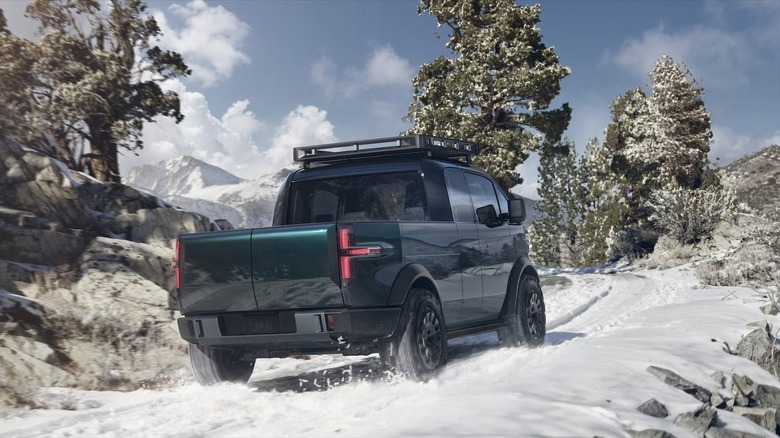
It's a strange fact of automotive life that, having told us breathlessly for years that EVs would allow an upheaval in vehicle and cabin design, most of what's on the market today or is coming down the line has stuck to the familiar. For all of the eye-catching concept cars with "lounge style" cabins, maximizing the absence of a bulky engine at the front and a driveshaft running down the center, by the time you get to production EVs it all feels fairly standard.
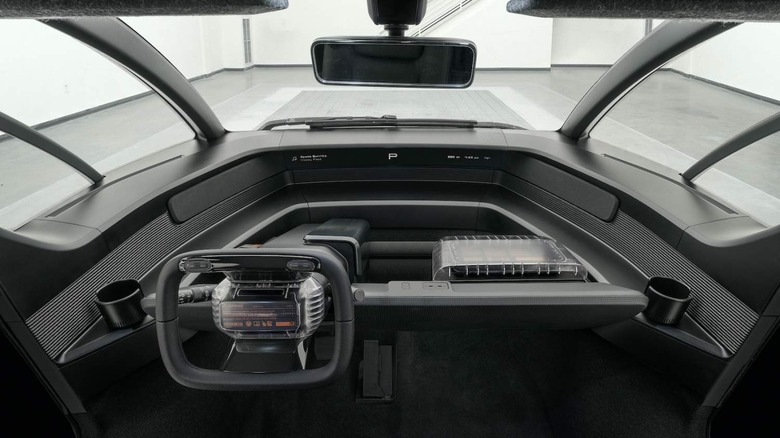
There's an argument to be made there, that familiarity helps sell vehicles. Trying to coax any driver out of their internal combustion car or truck, and persuade them that an all-electric alternative will work from them, can be an uphill struggle. If it's not range anxiety or lingering preconceptions that EVs are lackluster or weak, it's a simple, deep-running anxiety about what's "new" and potentially confusing. Dressing up a new-fangled electric drivetrain with a comfortingly recognizable shape and interior could make that process of persuasion a little easier.
All the same, it's hard not to see that compromise as detrimental – or, at the very least, a frustrating sacrifice – in the long run.
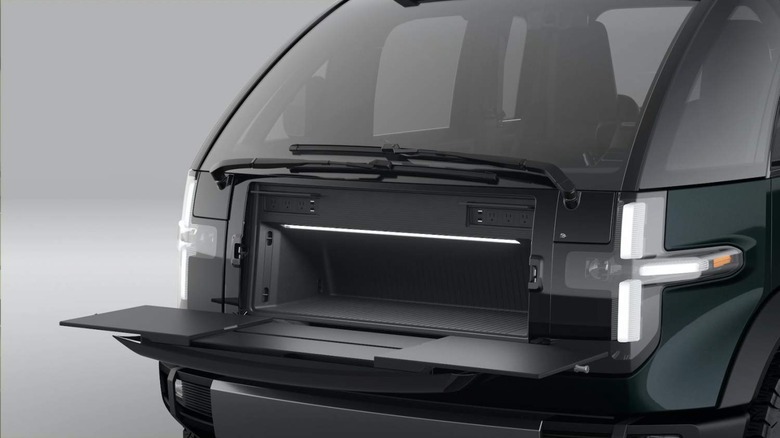
The F-150 became America's best-selling vehicle for so many decades because it delivered on utility. Form followed function, because the architecture of an internal combustion vehicle demanded that, only now we have new EVs clinging to what's familiar despite this being a ripe moment for reinvention. Canoo's fold-out workspace frunk, expanding bed, pop-up camper accessories, and reconfigurable cabin are clever design flourishes, sure, but what's really special is the automaker's eagerness to oust the old thinking and embrace the potential differences.
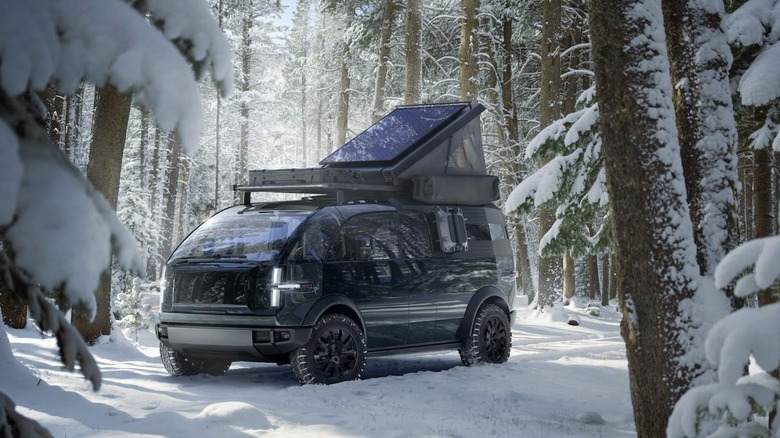
It'll be some time before you can actually buy one, of course. Canoo expects to open preorders later this year, but production and deliveries won't begin until "as early as 2023" the automaker admits. We don't know pricing, or full specs – so far Canoo has only really said to expect 200+ miles of range and a choice of dual- or rear-wheel drive – and it's worth noting that Canoo still hasn't actually started producing any of the EVs it has designed. Considering how tricky that process is, as many other startups will attest to, it's probably best to see 2023 as an aspiration rather than a promise.
Still, even if the timescales struggle and the price proves outlandish, there are other ways that Canoo could be considered a success. Here's hoping that its willingness to experiment beyond the familiar proves contagious among automakers in general.
